Cover
Springer Series in
Computational
Mathematics 41
Spectral Methods
ISBN 9783540710400
Preface
Contents
Symbol List
Chapter 1 Introduction
1.1 Weighted Residual Methods
1.2 Spectral-Collocation Method
1.3 Spectral Methods of Galerkin Type
1.3.1 Galerkin Method
1.3.2 Petrov-Galerkin Method
1.3.3 Galerkin Method with Numerical Integration
1.4 Fundamental Tools for Error Analysis
1.5 Comparative Numerical Examples
1.5.1 Finite-Difference Versus Spectral-Collocation
1.5.2 Spectral-Galerkin Versus Spectral-Collocation
Problems
Chapter 2 Fourier Spectral Methods for Periodic Problems
2.1 Continuous and Discrete Fourier Transforms
2.1.1 Continuous Fourier Series
2.1.2 Discrete Fourier Series
2.1.3 Differentiation in the Physical Space
2.1.4 Differentiation in the Frequency Space
2.2 Fourier Approximation
2.2.1 Inverse Inequalities
2.2.2 Orthogonal Projection
2.2.3 Interpolation
2.3 Applications of Fourier Spectral Methods
2.3.1 Korteweg–de Vries (KdV) Equation
2.3.2 Kuramoto–Sivashinsky (KS) Equation
2.3.3 Allen–Cahn Equation
Problems
Chapter 3 Orthogonal Polynomials and Related Approximation Results
3.1 Orthogonal Polynomials
3.1.1 Existence and Uniqueness
3.1.2 Zeros of Orthogonal Polynomials
3.1.3 Computation of Zeros of Orthogonal Polynomials
3.1.4 Gauss-Type Quadratures
3.1.5 Interpolation and Discrete Transforms
3.1.6 Differentiation in the Physical Space
3.1.7 Differentiation in the Frequency Space
3.1.8 Approximability of Orthogonal Polynomials
3.1.8.1 A Short Summary of this Section
3.2 Jacobi Polynomials
3.2.1 Basic Properties
3.2.1.1 Sturm-Liouville Equation
3.2.1.2 Rodrigues' Formula
3.2.1.3 Recurrence Formulas
3.2.1.4 Maximum Value
3.2.2 Jacobi-Gauss-Type Quadratures
3.2.3 Computation of Nodes and Weights
3.2.4 Interpolation and Discrete Jacobi Transforms
3.2.5 Differentiation in the Physical Space
3.2.5.1 Jacobi-Gauss-Lobatto Differentiation Matrix
3.2.5.2 Jacobi-Gauss-Radau Differentiation Matrix
3.2.5.3 Jacobi-Gauss Differentiation Matrix
3.2.6 Differentiation in the Frequency Space
3.3 Legendre Polynomials
3.3.1 Legendre-Gauss-Type Quadratures
3.3.2 Computation of Nodes and Weights
3.3.3 Interpolation and Discrete Legendre Transforms
3.3.4 Differentiation in the Physical Space
3.3.5 Differentiation in the Frequency Space
3.4 Chebyshev Polynomials
3.4.1 Interpolation and Discrete Chebyshev Transforms
3.4.2 Differentiation in the Physical Space
3.4.3 Differentiation in the Frequency Space
3.5 Error Estimates for Polynomial Approximations
3.5.1 Inverse Inequalities for Jacobi Polynomials
3.5.2 Orthogonal Projections
3.5.3 Interpolations
3.5.3.1 Jacobi-Gauss Interpolation
3.5.3.2 Jacobi-Gauss-Radau Interpolation
3.5.3.3 Jacobi-Gauss-Lobatto Interpolation
Problems
Chapter 4 Spectral Methods for Second-Order Two-Point Boundary Value Problems
4.1 Galerkin Methods
4.1.1 Weighted Galerkin Formulation
4.1.2 Legendre-Galerkin Method
4.1.3 Chebyshev-Galerkin Method
4.1.4 Chebyshev-Legendre Galerkin Method
4.2 Galerkin Method with Numerical Integration
4.3 Collocation Methods
4.3.1 Galerkin Reformulation
4.3.2 Petrov-Galerkin Reformulation
4.4 Preconditioned Iterative Methods
4.4.1 Preconditioning in the Modal Basis
4.4.1.1 Legendre Case
4.4.1.2 Chebyshev Case
4.4.2 Preconditioning in the Nodal Basis
4.4.2.1 Finite Difference Preconditioning
4.4.2.2 Finite Element Preconditioning
4.5 Error Estimates
4.5.1 Legendre-Galerkin Method
4.5.2 Chebyshev-Collocation Method
4.5.3 Galerkin Method with Numerical Integration
4.5.4 Helmholtz Equation
4.5.4.1 A Priori Estimates
4.5.4.2 Convergence Analysis
Problems
Chapter 5 Volterra Integral Equations
5.1 Legendre-Collocation Method for VIEs
5.1.1 Numerical Algorithm
5.1.2 Convergence Analysis
5.1.3 Numerical Results and Discussions
5.2 Jacobi-Galerkin Method for VIEs
5.3 Jacobi-Collocation Method for VIEs with WeaklySingular Kernels
5.4 Application to Delay Differential Equations
Problems
Chapter 6 Higher-Order Differential Equations
6.1 Generalized Jacobi Polynomials
6.2 Galerkin Methods for Even-Order Equations
6.2.1 Fourth-Order Equations
6.2.2 General Even-Order Equations
6.3 Dual-Petrov-Galerkin Methods for Odd-Order Equations
6.3.1 Third-Order Equations
6.3.2 General Odd-Order Equations
6.3.3 Higher Odd-Order Equations with Variable Coefficients
6.4 Collocation Methods
6.5 Error Estimates
6.5.1 Even-Order Equations
6.5.2 Odd-Order Equations
6.6 Applications
6.6.1 Cahn–Hilliard Equation
6.6.2 Korteweg–de Vries (KdV) Equation
6.6.3 Fifth-Order KdV Type Equations
Problems
Chapter 7 Unbounded Domains
7.1 Laguerre Polynomials/Functions
7.1.1 Basic Properties
7.1.1.1 Generalized Laguerre Polynomials
7.1.1.2 Generalized Laguerre Functions
7.1.2 Laguerre-Gauss-Type Quadratures
7.1.3 Computation of Nodes and Weights
7.1.4 Interpolation and Discrete Laguerre Transforms
7.1.5 Differentiation in the Physical Space
7.1.6 Differentiation in the Frequency Space
7.2 Hermite Polynomials/Functions
7.2.1 Basic Properties
7.2.1.1 Hermite Polynomials
7.2.1.2 Hermite Functions
7.2.2 Hermite-Gauss Quadrature
7.2.3 Computation of Nodes and Weights
7.2.4 Interpolation and Discrete Hermite Transforms
7.2.5 Differentiation in the Physical Space
7.2.6 Differentiation in the Frequency Space
7.3 Approximation by Laguerre and Hermite Polynomials/Functions
7.3.1 Inverse Inequalities
7.3.2 Orthogonal Projections
7.3.3 Interpolations
7.4 Spectral Methods Using Laguerre and Hermite Functions
7.4.1 Laguerre-Galerkin Method
7.4.2 Hermite-Galerkin Method
7.4.3 Numerical Results and Discussions
7.4.4 Scaling Factor
7.5 Mapped Spectral Methods and Rational Approximations
7.5.1 Mappings
7.5.2 Approximation by Mapped Jacobi Polynomials
7.5.3 Spectral Methods Using Mapped Jacobi Polynomials
7.5.3.1 A Generic Example
7.5.3.2 Error Estimates for a Model Problem
7.5.3.3 Implementations and A Comparison Study
7.5.4 Modified Legendre-Rational Approximations
7.5.5 Irrational Mappings
7.5.6 Miscellaneous Issues and Extensions
7.5.6.1 Other One-Dimensional Applications
7.5.6.2 Multidimensional Problems
Problems
Chapter 8 Separable Multi-Dimensional Domains
8.1 Two- and Three-Dimensional Rectangular Domains
8.1.1 Two-Dimensional Case
8.1.1.1 Matrix Diagonalization Method
8.1.1.2 Partial Diagonalization
8.1.1.3 Full Diagonalization
8.1.1.4 An Equivalent Approach Based on Separation of Variables
8.1.2 Three-Dimensional Case
8.2 Circular and Cylindrical Domains
8.2.1 Dimension Reduction and Pole Conditions
8.2.2 Spectral-Galerkin Method for a Bessel-Type Equation
8.2.2.1 Legendre-Galerkin Approximation
8.2.2.2 Chebyshev-Galerkin Approximation
8.2.3 Another Fourier-Chebyshev Galerkin Approximation
8.2.3.1 A Fourier-Chebyshev Interpolation Operator on the Unit Disk
8.2.3.2 Description of the Algorithm
8.2.4 Numerical Results and Discussions
8.2.5 Three-Dimensional Cylindrical Domains
8.3 Spherical Domains
8.3.1 Spectral Methods on the Surface of a Sphere
8.3.2 Spectral Methods in a Spherical Shell
8.4 Multivariate Jacobi Approximations
8.4.1 Notation and Preliminary Properties
8.4.2 Orthogonal Projections
8.4.3 Interpolations
8.4.4 Applications of Multivariate Jacobi Approximations
8.4.4.1 Rectangular Domains
8.4.4.2 Circular and Spherical Domains
8.5 Sparse Spectral-Galerkin Methods for High-Dimensional Problems
8.5.1 Hyperbolic Cross Jacobi Approximations
8.5.2 Optimized Hyperbolic Cross Jacobi Approximations
8.5.3 Extensions to Generalized Jacobi Polynomials
8.5.4 Sparse Spectral-Galerkin Methods
8.5.4.1 One-Dimensional Hierarchical Basis
8.5.4.2 Multi-Dimensional Hierarchical Basis and Sparse Grid
8.5.4.3 Sparse Spectral-Galerkin Method
Problems
Chapter 9 Applications in Multi-Dimensional Domains
9.1 Helmholtz Equation for Acoustic Scattering
9.1.1 Time-Harmonic Wave Equations
9.1.2 Dirichlet-to-Neumann (DtN) Map
9.1.3 Spectral-Galerkin Method
9.2 Stokes Equations
9.2.1 Stokes Equations and Uzawa Operator
9.2.2 Galerkin Method for the Stokes Problem
9.2.3 Error Analysis
9.3 Allen–Cahn and Cahn–Hilliard Equations
9.3.1 Simple Semi-Implicit Schemes
9.3.2 Convex Splitting Schemes
9.3.3 Stabilized Semi-Implicit Schemes
9.3.4 Spectral-Galerkin Discretizations in Space
9.3.5 Error Analysis
9.3.6 Effect of Spatial Accuracy
9.4 Unsteady Navier–Stokes Equations
9.4.1 Second-Order Rotational Pressure-Correction Scheme
9.4.2 Second-Order Consistent Splitting Scheme
9.4.3 Full Discretization
9.5 Axisymmetric Flows in a Cylinder
9.5.1 Governing Equations and the Time Discretization
9.5.1.1 Spatial Discretization
9.5.2 Treatment for the Singular Boundary Condition
9.6 Gross-Pitaevskii Equation
9.6.1 GPE and Its Time Discretization
9.6.2 Hermite-Collocation Method for the 1-D GPE
9.6.3 Laguerre Method for the 2-D GPE with RadialSymmetry
9.6.4 Laguerre-Hermite Method for the 3-D GPE with Cylindrical Symmetry
9.6.5 Numerical Results
Problems
Appendix A Properties of the Gamma Functions
Appendix B Essential Mathematical Concepts
B.1 Banach Space
B.2 Hilbert Space
B.3 Lax-Milgram Lemma
B.4 Lp-Space
B.5 Distributions and Weak Derivatives
B.6 Sobolev Spaces
B.7 Integral Identities: Divergence Theorem and Green's Formula
B.8 Some Useful Inequalities
B.8.1 Sobolev-Type Inequalities
B.8.2 Hardy-Type Inequalities
B.8.3 Gronwall Inequalities
Appendix C Basic Iterative Methods and Preconditioning
C.1 Krylov Subspace Methods
C.1.1 Conjugate Gradient (CG) Method
C.1.2 BiConjugate Gradient (BiCG) Method
C.1.3 Conjugate Gradient Squared (CGS) Method
C.1.4 BiConjugate Gradient Stabilized (BiCGStab) Method
C.1.5 Generalized Minimal Residual (GMRES) Method
C.2 Preconditioning
C.2.1 Preconditioned Conjugate Gradient (PCG) Method
C.2.2 Preconditioned GMRES Method
Appendix D Basic Time Discretization Schemes
D.1 Standard Methods for Initial-Valued ODEs
D.1.1 Runge–Kutta Methods
D.1.2 Multi-Step Methods
D.1.3 Backward Difference Methods (BDF)
D.2 Operator Splitting Methods
References
Index
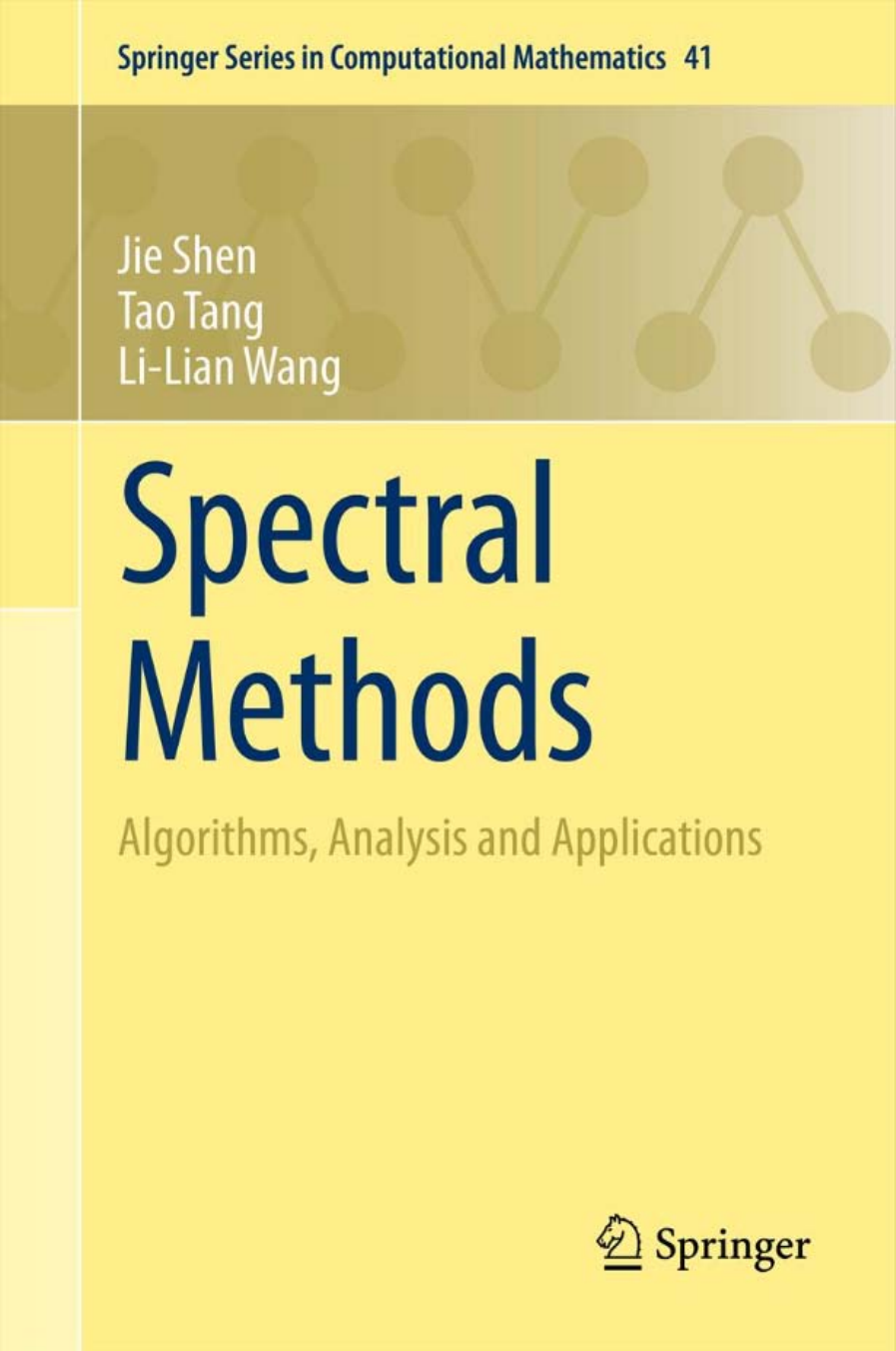
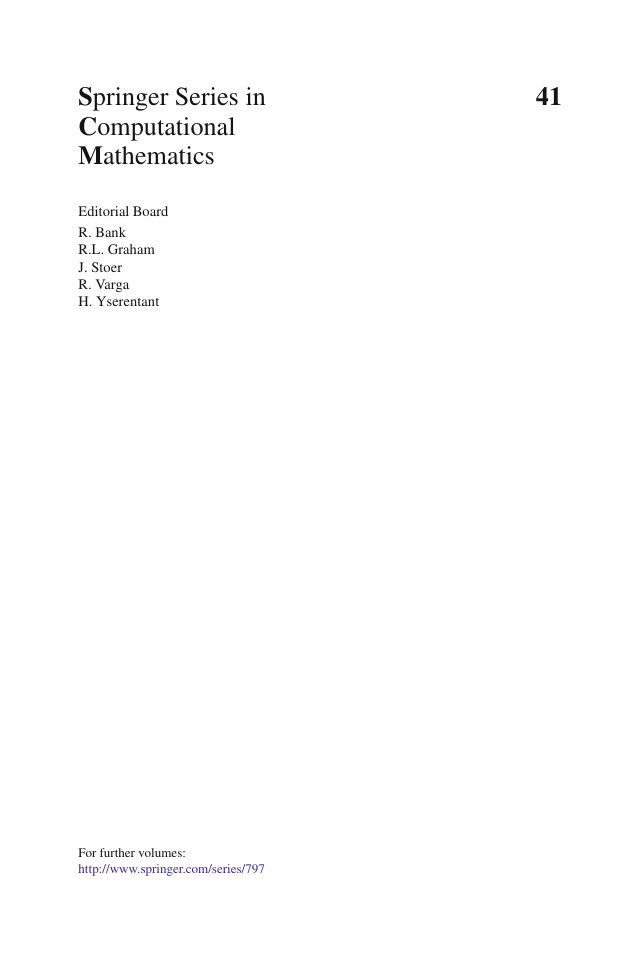

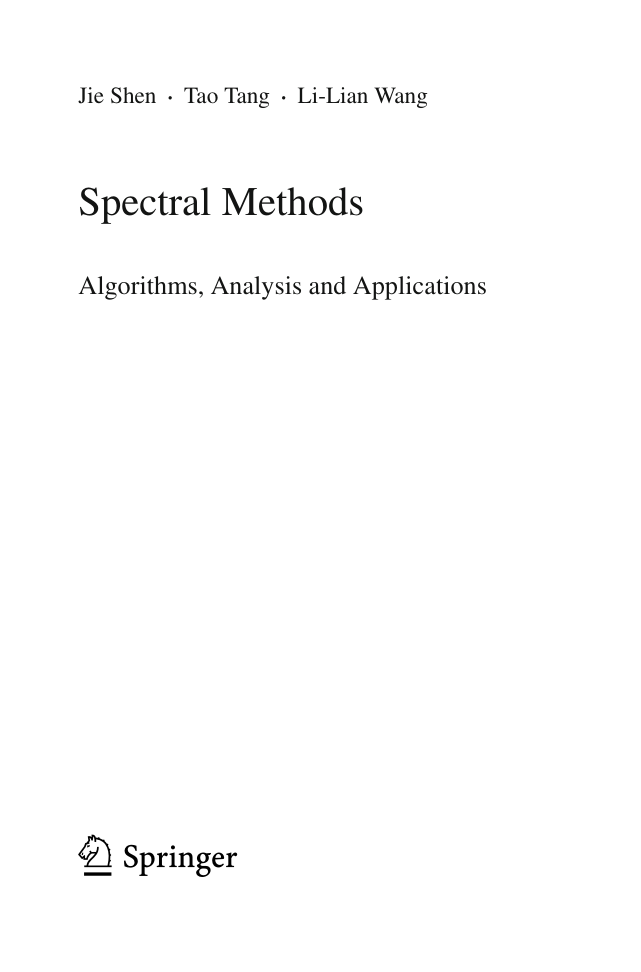
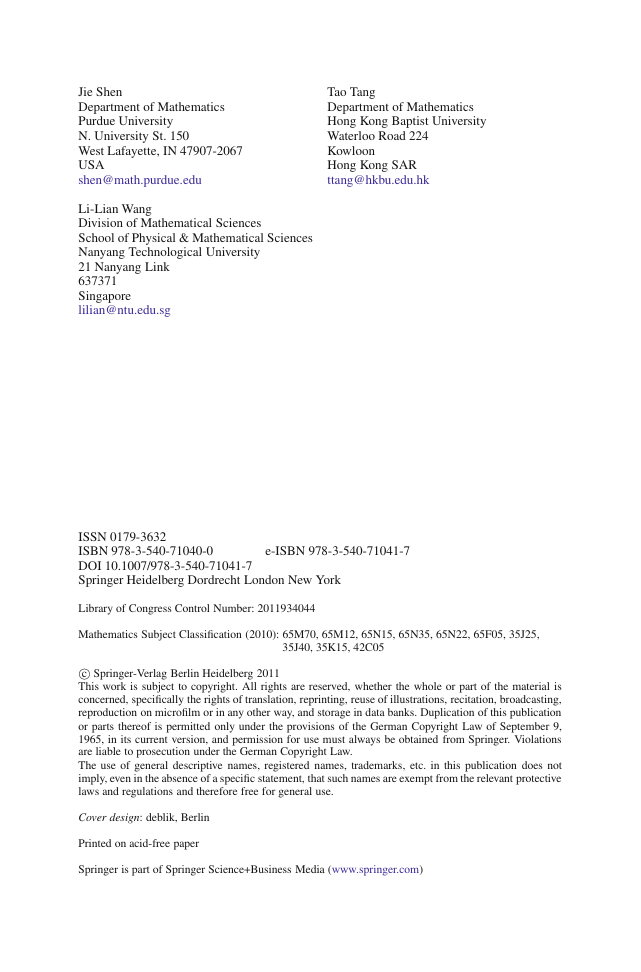
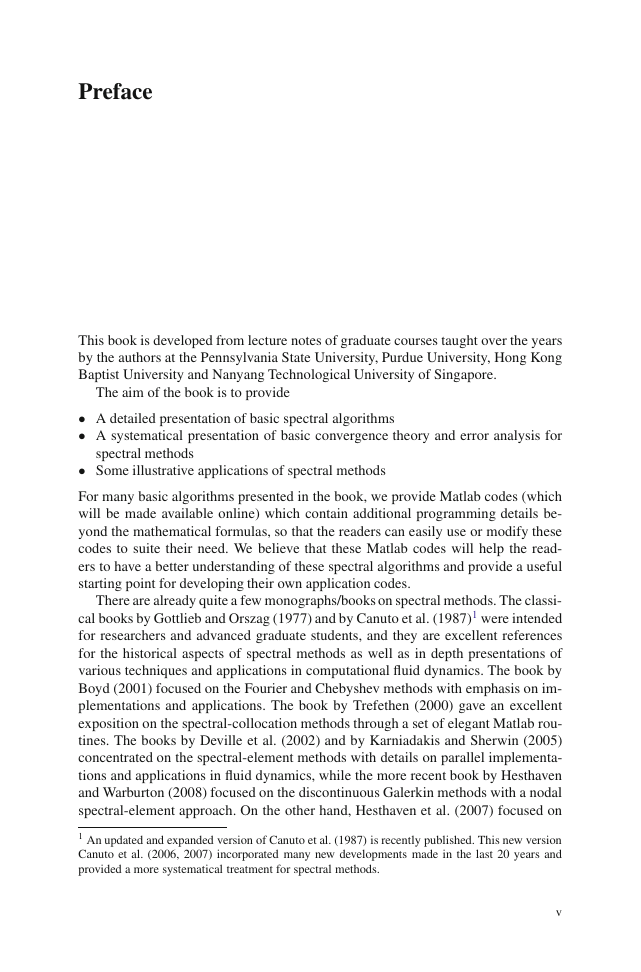

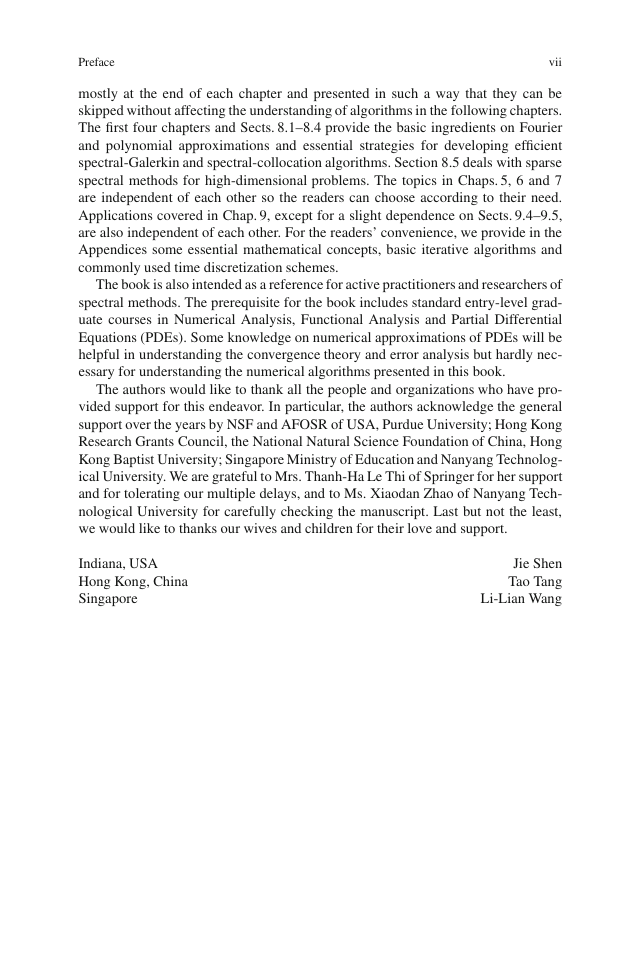








 2023年江西萍乡中考道德与法治真题及答案.doc
2023年江西萍乡中考道德与法治真题及答案.doc 2012年重庆南川中考生物真题及答案.doc
2012年重庆南川中考生物真题及答案.doc 2013年江西师范大学地理学综合及文艺理论基础考研真题.doc
2013年江西师范大学地理学综合及文艺理论基础考研真题.doc 2020年四川甘孜小升初语文真题及答案I卷.doc
2020年四川甘孜小升初语文真题及答案I卷.doc 2020年注册岩土工程师专业基础考试真题及答案.doc
2020年注册岩土工程师专业基础考试真题及答案.doc 2023-2024学年福建省厦门市九年级上学期数学月考试题及答案.doc
2023-2024学年福建省厦门市九年级上学期数学月考试题及答案.doc 2021-2022学年辽宁省沈阳市大东区九年级上学期语文期末试题及答案.doc
2021-2022学年辽宁省沈阳市大东区九年级上学期语文期末试题及答案.doc 2022-2023学年北京东城区初三第一学期物理期末试卷及答案.doc
2022-2023学年北京东城区初三第一学期物理期末试卷及答案.doc 2018上半年江西教师资格初中地理学科知识与教学能力真题及答案.doc
2018上半年江西教师资格初中地理学科知识与教学能力真题及答案.doc 2012年河北国家公务员申论考试真题及答案-省级.doc
2012年河北国家公务员申论考试真题及答案-省级.doc 2020-2021学年江苏省扬州市江都区邵樊片九年级上学期数学第一次质量检测试题及答案.doc
2020-2021学年江苏省扬州市江都区邵樊片九年级上学期数学第一次质量检测试题及答案.doc 2022下半年黑龙江教师资格证中学综合素质真题及答案.doc
2022下半年黑龙江教师资格证中学综合素质真题及答案.doc